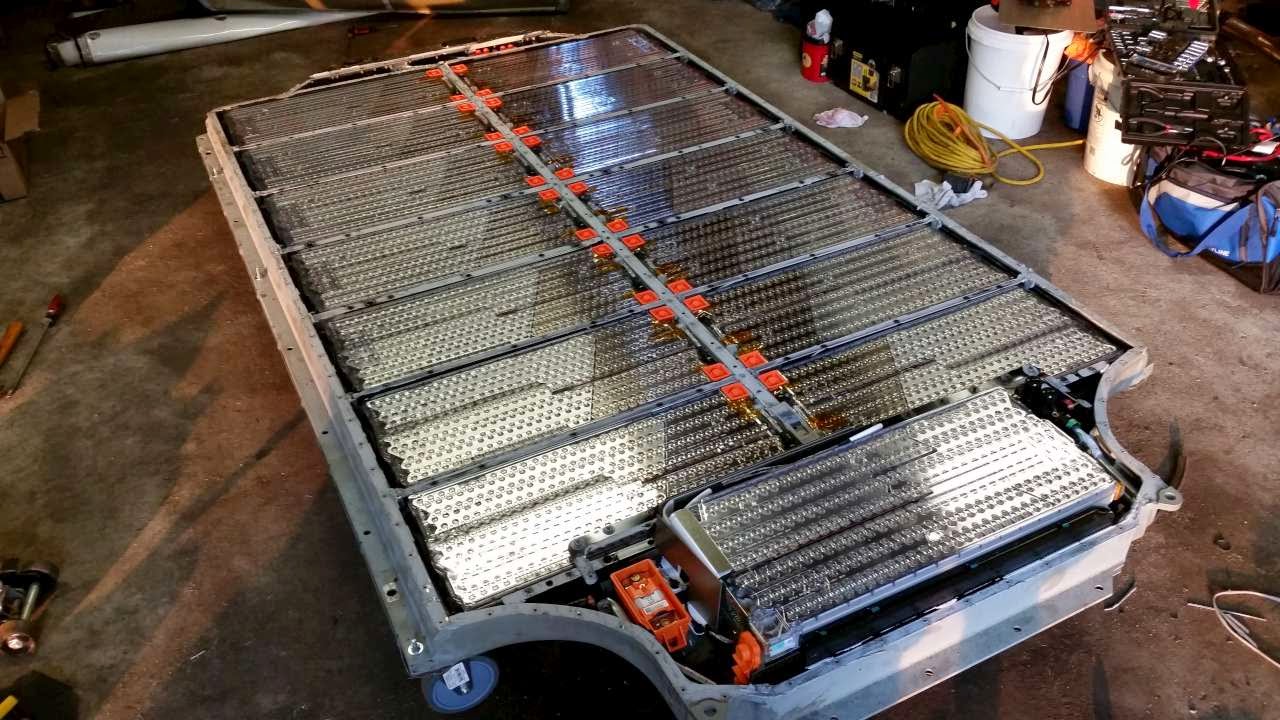Earlier this year, Tesla hit the unfavorable end of mainstream media when a Model S spontaneously caught fire in Shanghai, China. Just one of a handful of Tesla fires, this one stood out to many as the car was simply parked in a garage neither charging or recently being driven. This single event put another negative image to electric cars as a whole, so Tesla began to investigate the matter.
Many sources, including some mainstream media, reported the possibility of a hoax or setup bringing the legitimacy of this Tesla fire into question.
We now have a definite answer as Tesla has concluded their joint investigation. According to their findings, this was caused by a single battery module near the front of the vehicle. There were no system defects detected in the analysis of the burned electric car.
Panasonic supplies Tesla with their battery cells but not the module. Tesla takes the Panasonic cells and groups them together to form the battery modules. The modules are then grouped together in order to build the battery pack.

Courtesy of Tesla Motors Club user wk057
Alongside the statement of fault, Tesla announced they released a software update to modify their thermal management systems on the Model S & X. In theory, this will help prevent future battery fires while also improving battery longevity.
It should be noted that the vehicle in this accident is an early Model S and does not reflect the current production process. Tesla still stands by the fact that EVs are about ten times less likely to catch fire than tradition ICEs. This statement is somewhat true but there is good reason to bring Tesla’s accidents into the limelight. Electric car fires might be less likely, but they’re much more dangerous than the alternative.
The company has active fire prevention measures standard with all vehicles. Not only is the battery pack designed to withhold extreme impact, each battery module is placed in between firewalls. Vents are also in place to direct hot airflow and flames towards the ground rather than into the cabin. While none of the above helped much in this case, Tesla has taken the necessary precautions and no government has said otherwise.
Nio, a Tesla competitor in the Shanghai region, will be recalling 4,803 electric vehicles due to a similar battery module defect causing fires. Three fires have already been reported.
Audi has also recently began a voluntary recall for 540 E Trons over another fire risk. With no actual incidents reported, their software picked up a faulty seal in five of their electric vehicles.
On the other end of the spectrum, for comparison’s sake, BMW has recalled 925,000 gas vehicles over another potential fire risk.
Tesla has taken safety concerns of both electric vehicles and their Autopilot features seriously in the last year. They have opened up about a few incidents now and have begun to release a quarterly safety report regardless of whether or not it makes them look bad. This transparency is much needed in an industry people fear. With each accident and situation the company has taken initiative in the form of a software update to address future potential incidents.
